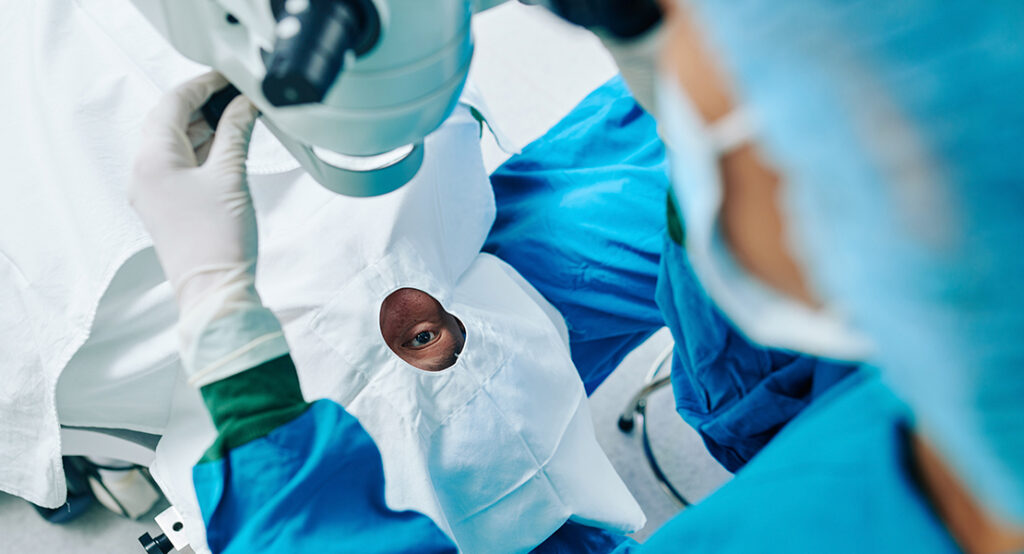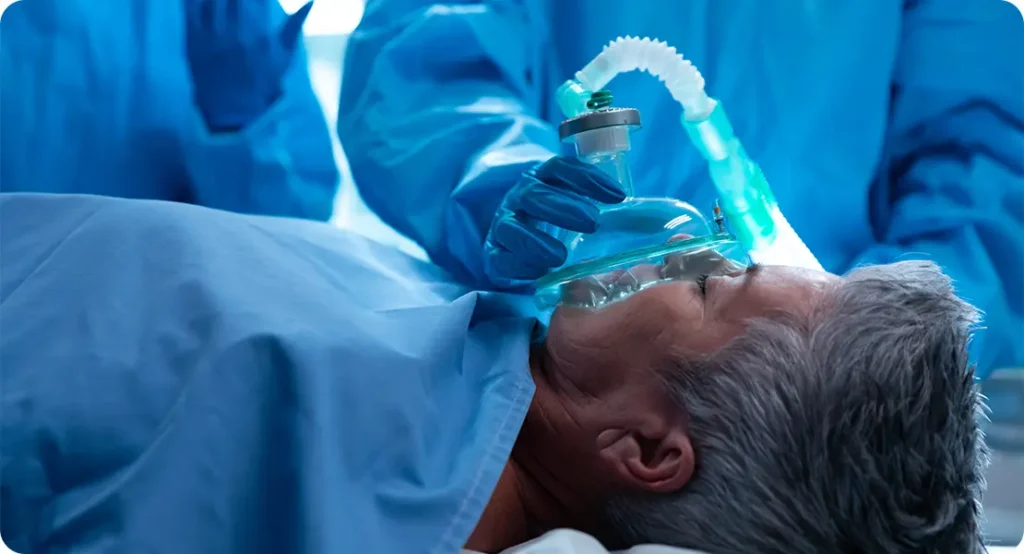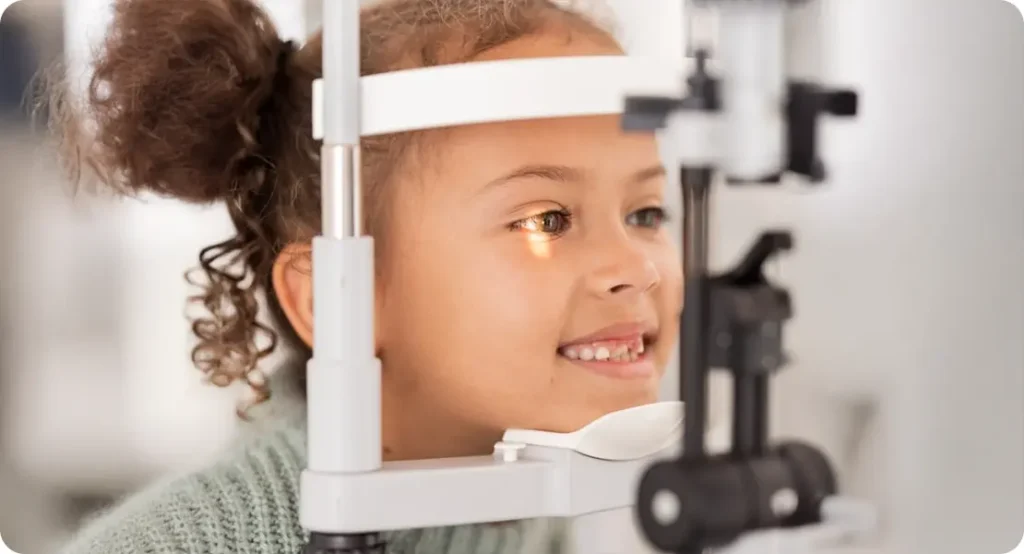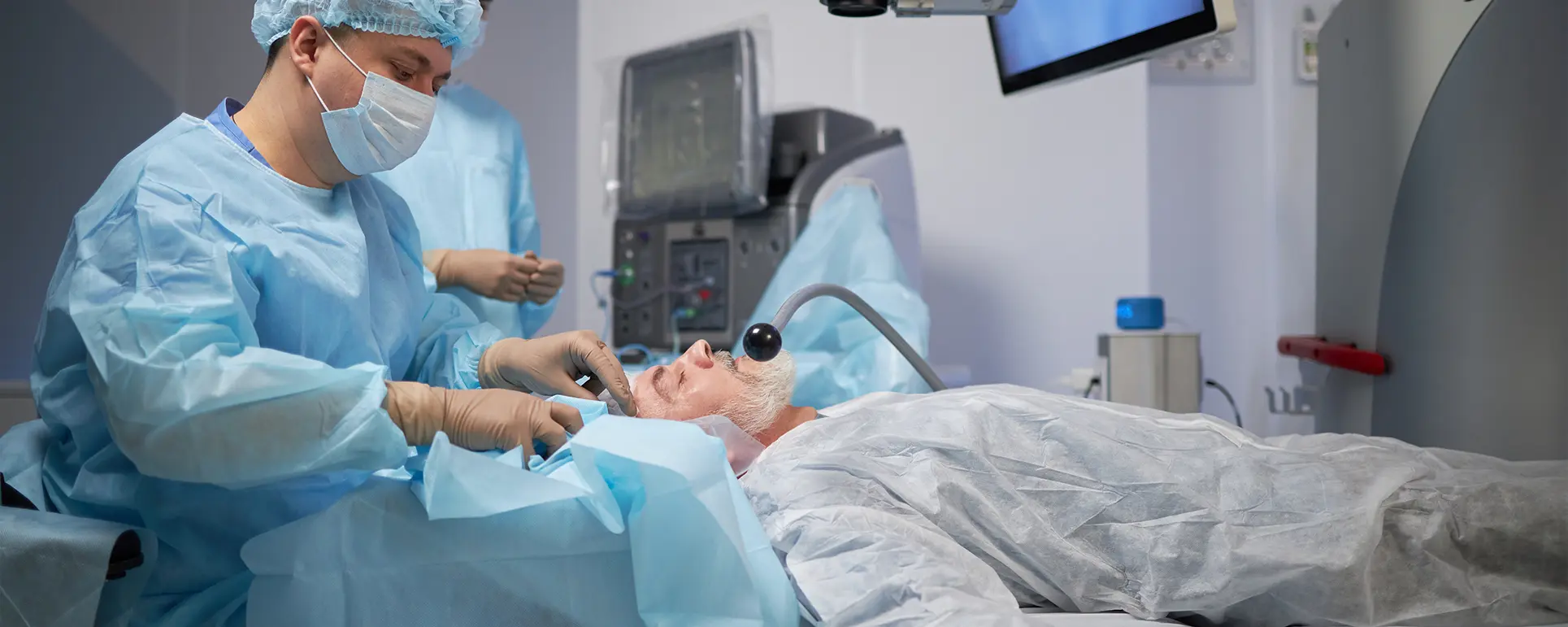If you’re preparing for cataract surgery, there’s a good chance you’ve wondered: what if I blink or move during the procedure? It’s one of the most common worries patients have — and completely understandable. After all, you’ll be awake during the operation, and your natural instinct is to blink or flinch when something comes close to your eye.
So, let’s take the anxiety out of the equation. In this guide, we’re going to walk you through exactly what happens during cataract surgery when it comes to blinking and movement. We’ll explain what safeguards are in place, how your eye is kept completely still, and what the surgeon does if any unexpected motion does happen. By the end, you’ll have a much clearer understanding — and hopefully feel far more confident heading into your surgery.
Why the Fear of Blinking or Moving Is So Common
Let’s start with this: your fear is valid, and you’re not alone. Most people have an automatic reaction when something approaches the eye — it’s a basic protective reflex. So it’s perfectly normal to be concerned about how you’ll keep your eye still while a surgeon works on something so delicate.
There’s also the fact that, unlike other surgeries, you’re awake for this one. You’re lying on the operating table, aware of your surroundings, and that can understandably make the idea of staying perfectly still feel like a daunting task. But what’s important to know is that the entire procedure is designed around this.
Will I Be Able to Blink During Cataract Surgery?
Technically, no — and that’s a good thing. During cataract surgery, a device called a speculum is gently placed between your eyelids. This keeps the eye open throughout the operation without you needing to do anything. It doesn’t hurt, and most people find that after the initial sensation, they quickly stop noticing it.
Because of this, blinking simply isn’t possible once the surgery starts. The speculum ensures the surgeon always has a clear, unobstructed view of your eye, and you don’t have to worry about trying to hold your eyelid open yourself.
What Stops My Eye From Moving?

Now, blinking is handled — but what about the eye moving itself? This is where local anaesthesia comes in.
Before surgery begins, the eye is numbed using anaesthetic drops or, in some cases, a gentle injection around the eye. This not only blocks pain but also significantly reduces the movement of the eye muscles. You’ll still be able to see light or shapes during surgery, but you won’t be able to move your eye freely or feel any urge to do so.
In some surgical centres, especially for more complex cases, a sub-Tenon’s block or peribulbar injection is used — these go a step further by temporarily paralysing the eye muscles to eliminate even minor involuntary movements. Your surgeon will choose the method that’s safest and most appropriate for you.
How the Surgeon Guides Your Gaze
Even though the eye is stabilised, your surgeon will still give gentle instructions during the operation — like “look at the light” or “keep looking straight ahead.” These verbal cues help keep your gaze steady, especially during critical moments like the incision or lens placement.
Most patients find that focusing on a bright light — which looks a bit like a glowing ring or halo — is easy enough, even without full control of the eye muscles. And don’t worry if you feel uncertain about how well you’re doing. The surgeon is watching your eye extremely closely and can adjust things if needed.
What If I Accidentally Move?
This is the big question — what happens if you move?
First of all, small, natural movements like slight shifts in breathing or a subtle twitch are completely expected. The equipment used in modern cataract surgery is designed to accommodate that. The operating microscope allows the surgeon to instantly adapt, and many surgical tools are designed with stabilisation in mind.
If you do make a more noticeable movement — let’s say you sneeze or jerk suddenly — the surgeon will immediately pause. Most modern cataract surgeons are incredibly experienced in dealing with this. They’ll gently assess the situation, reposition instruments if needed, and resume when everything is safe again. The incision is tiny (typically 2–2.5 mm), and the tools are precise — so there’s very little risk even if this happens.
In short: the system is built to handle it.
The Role of Sedation

Although cataract surgery is done under local anaesthetic, you may also be given a small amount of sedation — especially if you’re particularly anxious. This helps you feel relaxed and calm, reducing the likelihood of sudden movements or stress-related tension.
Sedation doesn’t put you to sleep like general anaesthesia, but it can make the experience feel more dreamlike or distant. Some patients even report not remembering parts of the procedure. It’s not mandatory, but if you’re worried about being alert during the operation, it’s something to discuss with your surgical team in advance.
Safety Mechanisms in the Surgical Setup
Let’s zoom out for a moment and look at all the safety measures in place:
- Head positioning: Your head is placed in a soft cradle or headrest, which helps keep it stable. The surgical drape and pillow ensure you don’t turn or rotate unintentionally.
- Eye fixation: The combination of anaesthetic and the speculum keeps the eye steady and open.
- Instrument stabilisation: Tools used during surgery — including the phacoemulsification probe — are designed to be secure and controlled even in the event of mild motion.
- Surgeon’s training: Your surgeon has likely performed thousands of these procedures. Dealing with minor movement is second nature.
- Team monitoring: A nurse or anaesthetist is monitoring you at all times to detect restlessness, discomfort, or anxiety — and can step in immediately.
All of this means the risk of harm from blinking or moving is remarkably low. It’s not just a matter of luck — it’s built into the system.
What If You Have Tremors or Neurological Conditions?
This is a common concern among patients with Parkinson’s, multiple sclerosis, or essential tremor. If you have a condition that makes it hard to keep still, be sure to tell your surgeon well in advance.
In these cases, your medical team might opt for deeper sedation, additional eye blocks, or even general anaesthesia if absolutely necessary. The approach is always tailored to your needs — and your safety.
You won’t be disqualified from surgery just because of a movement disorder, but the planning around it will be a little more personalised.
Children and Special Needs Patients

In younger patients or those with learning difficulties, movement control can be especially tricky. For this reason, cataract surgery in children or individuals with certain special needs is usually done under general anaesthesia.
This ensures complete immobility during the procedure and allows the surgeon to work with precision and speed. Again, the goal is always the same: to protect the eye and deliver the best possible outcome.
Will I Feel Like Moving?
Interestingly, most patients say that once the surgery starts, the urge to move disappears. The calming effects of the anaesthetic, the quiet focus of the theatre, and the presence of the surgical team help put your mind at ease. You’re not aware of time passing in the usual way.
You may notice pressure or vague sensations, but no sharp pain. In fact, many people are surprised at how quick and comfortable the whole experience is.
The Myth of “Don’t Blink”
You might have heard well-meaning advice like “make sure you don’t blink during the operation.” But the truth is — you don’t need to worry about that. The eye speculum takes that pressure off your shoulders. There’s nothing you have to “do right” when it comes to keeping still.
Your only job is to relax, trust the team, and follow any simple instructions they give you. That’s it.
What If I’m Still Worried?
If anxiety about blinking or moving is keeping you up at night, don’t keep it to yourself. Talk to your surgeon or nurse at your pre-op appointment. Let them know your fears — they hear this all the time and can walk you through exactly what to expect.
In some clinics, you can even visit the theatre beforehand, so the environment feels more familiar. Some offer relaxation techniques or prescribe mild anti-anxiety medication for the night before.
You don’t need to be brave in silence — this is your health, and your peace of mind matters.
FAQs: What Happens If You Blink or Move During Cataract Surgery?
- Will I feel like blinking during the surgery?
No, you won’t feel the urge to blink during cataract surgery because a small device called a speculum gently holds your eyelids open, and the anaesthetic used before the procedure ensures you don’t experience the usual sensation that makes you want to blink. - Can the surgeon tell if I move slightly?
Yes, even the smallest movements are immediately noticeable to the surgeon through the operating microscope, and if necessary, they will pause the procedure momentarily to make sure everything is still safe and precisely positioned before continuing. - Is it dangerous to move during cataract surgery?
Minor movements are not dangerous because the surgical team is prepared for them and the tools used are designed to remain stable, but more sudden or significant movement could require the surgeon to briefly stop and reposition instruments to ensure no harm is done. - What happens if I sneeze or cough?
If you sneeze or cough during surgery, the team will pause immediately and allow you to settle before continuing, as cataract surgery is carried out in a calm, controlled environment where such events are anticipated and managed without risk. - Do I need to stay perfectly still the whole time?
You don’t need to be frozen in place; natural breathing and small movements are expected, and the key is simply to stay relaxed and follow any guidance from the surgeon, who will talk you through where to focus your gaze and let you know if any adjustments are needed. - What if I’m very anxious on the day?
If you’re feeling anxious, tell your nurse or surgeon before the procedure begins, as they can offer you mild sedation to help you feel more at ease and talk you through the steps to give you confidence and reassurance throughout the experience. - Can I choose general anaesthesia to avoid this concern?
General anaesthesia is rarely needed for cataract surgery in adults, but if you have an underlying condition or extreme anxiety that makes it hard to stay still, your ophthalmologist may discuss it as an option in specific situations. - How long is the surgery, and will I have to stay still the whole time?
The surgery typically takes just 10 to 15 minutes, and while staying generally still is important, the setup — including head support and anaesthetic — helps you remain comfortable and steady without needing to make a conscious effort. - Can I see the instruments coming towards my eye?
During the procedure, you’ll see bright lights and vague shapes but not clear details of the instruments, and most patients describe the view as blurred or dreamlike rather than something that triggers discomfort or fear. - Does the eye speculum hurt or feel uncomfortable?
The speculum may feel a little unusual for a few seconds when first inserted, but it doesn’t hurt, and thanks to the anaesthetic, most patients stop noticing it almost immediately after the surgery begins.
Final Thoughts: You’re Safer Than You Think
So, let’s go back to that original question: what happens if you blink or move during cataract surgery?
The answer is reassuring. Thanks to a combination of physical restraints (like the eye speculum), local anaesthetic, and the surgeon’s skill, your eye is kept safely in place. Even if you move slightly or flinch, the procedure can be safely paused and resumed without harm. The system is robust, time-tested, and designed around real human behaviour — including the impulse to blink.
At London Cataract Centre, we see many patients every year who come in with this exact concern. And almost all of them leave saying, “It wasn’t nearly as bad as I thought.” Many are amazed at how smooth, gentle, and uneventful the process turns out to be.
So take a deep breath. Your eye will be just fine. And so will you.
References
- Allen, D. and Vasavada, A. (2006) ‘Cataract and surgery for cataract’, BMJ, 333(7559), pp. 128–132. Available at: https://www.bmj.com/content/333/7559/128
- National Institute for Health and Care Excellence (NICE). (2017) Cataracts in adults: management. NICE guideline [NG77]. Available at: https://www.nice.org.uk/guidance/ng77

